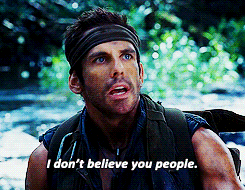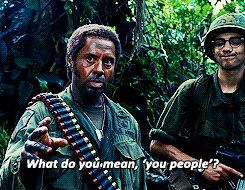I find it instructive the people who are rubbishing hand catching are the ones who are quite new here............
You are using an out of date browser. It may not display this or other websites correctly.
You should upgrade or use an alternative browser.
You should upgrade or use an alternative browser.
Motor Fire on my P3P, help please!!!
- Thread starter Rich M-S
- Start date
- Status
- Not open for further replies.
Also who actually executes the rth function and let's their phantom land by itself instead of flipping s1 to take back control before touchdown and land it their self.
Sent from my iPhone using PhantomPilots mobile app
If you actually read the original post I didn' land it using the RTH, I was using it as an example!!
If you can't post anything helpful then don't bother at all!!
Sent from my iPhone using PhantomPilots mobile app
I have a long experience designing motors, ESCs, drives, power supplies and that makes easy for me to visualize failures.
Are Esc's replaceable or is it a new main board?
Sent from my iPhone using PhantomPilots mobile app
I had a similar thing happen with my first Vision 2+, it took some time on the phone and shipping at my own expense back to DJI. They did eventually fix it, and it was the motor, which was caused by a bad ESC....
Could I ask which country you where in? I bought mine off Amazon in America, but live in the UK and the nearest option to send it back to DJI is in Holland?
Could take a while me thinks!!!
Sent from my iPhone using PhantomPilots mobile app

OK, three pages of off topic post here. Lets stay on topic from here out, if you forgot the topic is about a quad with a failed ESC after tipping upon landing. On topic only please.
- Joined
- Jan 6, 2016
- Messages
- 22
- Reaction score
- 3
- Age
- 38
save your hands and your bird and get the polar pro landing gear, its saved me from multiple tip-overs and i can land it in grass without the gimbal touching the ground
- Joined
- Jan 23, 2016
- Messages
- 188
- Reaction score
- 82
- Age
- 43

Are Esc's replaceable or is it a new main board?
They are integrated into the main board, pretty sure that if you have a problem with one, you'll need the whole thing.
- Joined
- Feb 17, 2016
- Messages
- 157
- Reaction score
- 45
- Age
- 43

They are integrated into the main board, pretty sure that if you have a problem with one, you'll need the whole thing.
No, they are four separate pieces that connect to the main board and are replaceable. Just one, two,three or all four. I mean seriously?
Sent from my iPhone using PhantomPilots mobile app
- Joined
- Jan 23, 2016
- Messages
- 188
- Reaction score
- 82
- Age
- 43
yes, seriously. Please be sure we're talking about the same model - they have been separate before but are now integrated into the outer corners of the main board. The only thing separate in the arms are the LEDs:
Phantom 3 Teardown
Phantom 3 Teardown
- Joined
- Feb 17, 2016
- Messages
- 157
- Reaction score
- 45
- Age
- 43
Yea man. You are totally right. Wrong thread. My badyes, seriously. Please be sure we're talking about the same model - they have been separate before but are now integrated into the outer corners of the main board. The only thing separate in the arms are the LEDs:
Phantom 3 Teardown
Sent from my iPhone using PhantomPilots mobile app
- Joined
- Aug 11, 2015
- Messages
- 70
- Reaction score
- 17
- Age
- 71
Yep I concur with the hand catch....all it takes is little mishap to cause mayhem....I only land on hard even surface...no grass or rock.
Ok guys, final question if you're still interested. But it's so disappointing that this has happened. The hand catching vs landing debate will always continue but my argument to that is the RTH function!
Night night, looking forward to hear your opinions? ,
well I think this example is a good case for prop guards, they would have saved you all this hassle, just my opinion.
- Joined
- Jul 29, 2015
- Messages
- 146
- Reaction score
- 42
- Age
- 82
I had similar problem but no damage at all. I bought prop guards and feel way more comfortable flying now. They are worth their weight in gold!Two more words: prop guards.
- Joined
- Mar 8, 2016
- Messages
- 619
- Reaction score
- 244
- Age
- 67
You can find that & more abbreviations here - AACU = Acronyms & Abbreviations Commonly Used
GOLD!! Thanks for that. I too have wondered about some of them.
- Joined
- Mar 8, 2016
- Messages
- 619
- Reaction score
- 244
- Age
- 67
Really? More than once have I flown to find the "No SD card" message in the DJI Go app and had to land to put it in.How did you get it airborne without an SD?
I tried that to no avail.
- Joined
- Mar 8, 2016
- Messages
- 619
- Reaction score
- 244
- Age
- 67
Hand catching is quite safe — a lot of us do it.Motors are replaceable. Hands are not.
Just to be sure, we're talking about doing this has a normal procedure and not in the emergency situation that the OP was talking about.
When you hand catch, you never have the surprise-gust-of-wind on landing issue.
Hand catching means that you don't need a nice, flat landing area. Taking off from the only 10" x 10" flat spot in the area is easy, but landing in the small spot is another matter altogether. Do you always fly in flat areas? I don't.
I almost never land on ground anymore, even when I think I safely can.
To Hand Catch:
- Bring the craft to a hover within arms reach. Some people prefer it to be pointing away from you so that your hand doesn't trigger the VPS (Visual Positioning System)
- Reach out with your right-hand, with your left-hand on the throttle stick of the controller. (*)
- Firmly grasp the landing gear nearest your right-hand.
- Bring down the throttle stick and hold until the motors power down.
(*) =
- Left-handed people can reverse the hands, but this assumes you've reconfigured the sticks as well, or whatever makes it sure that you can catch with one hand and throttle down with the other in comfort.
- Hold the controller to your chest; those of you with accessibility or arm muscle strength issues might want to use a harness / lanyard.
- Joined
- Mar 8, 2016
- Messages
- 619
- Reaction score
- 244
- Age
- 67
Scenario. Blustery day like today. Aircraft loses signal, battery low, or the RTH function is pressed. You let the P3P do its thing and come home. It lands and low and behold a gust of wind blows it over and the same thing happens that happened to my drone! Who's to blame? Me,? Pilot error, although it was on auto pilot or DJI because they programmed the software to bring it back in one piece?
Pilot error? Maybe not.
But more to the point: it would not have been a DJI error, so no warranty coverage.
There IS a gray area between out-and-out pilot error and definite DJI design flaw. They have built in a LOT of protections for signal loss or low-battery situations. It used to be the craft would just fly away or fall from the sky, so you should feel glad that you have those fail-safes.
If you let your craft fly until the battery is so low, AND you're doing it in gusty conditions, you've set yourself up for a higher potential of failure. To me, that squarely fits in the pilot error heading; but even if you disagree here, it is certainly not a manufacturing defect.
- Joined
- Mar 8, 2016
- Messages
- 619
- Reaction score
- 244
- Age
- 67
This isn't the center of the universe — lots of seasoned fliers hand catch.I find it instructive the people who are rubbishing hand catching are the ones who are quite new here............
This isn't the center of the universe — lots of seasoned fliers hand catch.
Of course they do - it wasn't the experienced fliers I was talking about!
I know what you mean though - a small number of posts doesn't mean they aren't experienced. Conversely just because you have 1000 posts doesn't make you an expert either you could be an armchair flier!
- Status
- Not open for further replies.
Similar threads
- Replies
- 1
- Views
- 976
- Replies
- 4
- Views
- 2K







